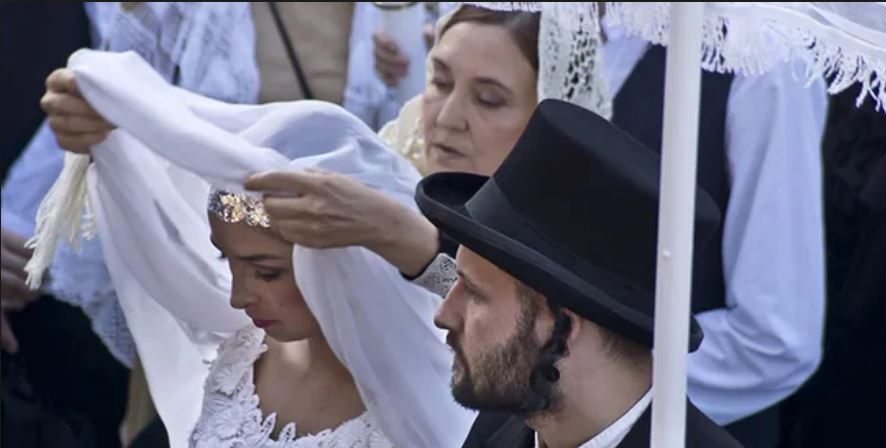The Deep Meaning behind An Orthodox Jewish Wedding
The Deep Meaning behind An Orthodox Jewish Wedding
There are many cultures around the world where getting married is a vastly different experience than what the typical American has come to expect. Different cultures focus on tradition and various other important aspects. Some of these may be rooted in religion while others are rooted in superstition. At times it might be that the activities taking place at certain weddings are a combination of cultural and superstitious aspects.
Orthodox Jewish weddings are certainly not your common wedding experience. There are several different things to expect with orthodox Jewish wedding ceremonies. First, these weddings are centered around adhering to the Torah in every aspect. As a result the traditions taken part in will be different from what could be expected at other non-orthodox Jewish weddings.
Second, orthodox Jewish weddings aren’t as liberal as what you might find with the other forms of Jewish weddings such as conservative Jewish weddings or reformed Jewish weddings. There’s a deep meaning behind these types of weddings, but there’s more than one meaning.
Some of these meaning might carry more weight than others, but all of them are very important and are followed to very strictly. We’ll start with one of the most important meanings.
Not meeting the bride (Kallah) from a week up to the wedding
The groom, who is called the Chattan, isn’t allowed to meet the bride right up to a week before the wedding, but the reason for this is centered around creating feelings of new and fresh love on the actual wedding day. Depending on just how orthodox the couple is they may not be able to meet each other at all throughout the entire time they’re engaged. This is significant because engagements tend to last for a period of 6 months, but sometimes can last for almost a year.
Showing a certain level of seriousness and dedication on both sides (Kabbalat Panim)
With Orthodox Jewish weddings they begin with what’s called a Kabbalat Panim reception. Different receptions are held for the women and the men. At these receptions the groom will meet with his guests and properly greet them. The guests will make toasts to him and sing. The bride (Kallah) will sit on what looks like a throne while meeting with her guests. Certain refreshments will be offered at these receptions as well.
The moms of both the Kallah as well as the Chattan will shatter a plate during this time. One of the main reasons for this tradition is for each side to show how important the commitment is. Think about it. You can completely put back together a broken plate right? So the same would apply to a relationship that gets broken.
This Jewish wedding tradition is also to show the idea that the kallah is expected to be modest and her modesty will bring blessing into her new home.
The veiling of the bride (Bedeken)
Right before the processional of the bride is to take place she is veiled. The story of Jacob in the Bible is what this custom is based on, which is a story based on Jacob marrying the sister of the bride on accident because she was hidden beneath the veil.
During this tradition the bride places herself in a chair right in front of everyone and her veil is concealing her face. The groom, who has his groomsmen surrounding him will all dance in the presence of the bride before the groom lifts up her veil.
The meaning behind this is important and speaks a bit to the first meaning made. It’s a symbol to demonstrate that the groom is wedding the bride not only because of how beautiful he considers her to be on the inside, but also because of how beautiful he considers her to be on the inside.
The wedding taking place underneath the Chuppah
The Chuppah is simply an arch that’s comprised of either birch, flowers or sometimes metal. In some cases the birch can be comprised of a combination of these different things. It’s important to note that in some cases the actual ceremony is also called a Chuppah.
The primary function of the Chuppah is for the groom to offer and the bride to accept the wedding band. And the wedding band is very simple in nature, nothing fancy.
After the bride gets to the groom underneath the Chuppah, the custom is for her to walk around him a total of seven times. After this the rabbi greets those in attendance before giving the Kiddush blessing. After this the wedding band is given to the bride by the groom, which is always bought using money o his own. It’s offered as a gift.
The meaning behind all of this is to for the bride to show that she accepts the proposal of marriage. After the ring has been accepted, then the seven blessings will be stated and the groom will proceed to shatter the wedding glass with his foot.
The first time together a husband and wife with two witnesses present
After the bride and groom have exchanged their wedding vows, they’ll be whisked away into a room where they’ll get the chance to be in each other’s presence alone as husband and wife for the very first time. When the bride and the groom go into the room together it has to be observed by two witnesses, and this is something that’s required according to Jewish law.
After this has taken place, then the reception begins. This is a time for all those in attendance to share in the commitment of the bride and groom and celebrate.
There are other important meanings behind an orthodox Jewish wedding, such as the men and the women being required to sit on separate sides as well as dance separately. Also, unlike a lot of weddings that tend to take place on Sundays, orthodox Jewish weddings take place on Sunday’s.
There really isn’t one primary deep meaning behind orthodox Jewish weddings, but the overall theme tends to be adhering strictly to Jewish customs. Orthodox Jewish weddings just don’t allow for any real flexibility as conservative or reformed Jewish weddings might. The customs and traditions are followed to the letter and they’re symbolic means are strongly believed.

Leave a Reply
Want to join the discussion?Feel free to contribute!